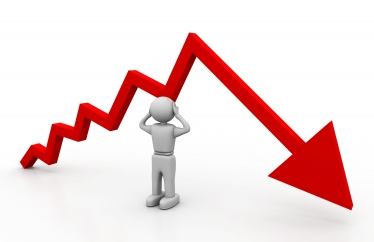For the many, the latest FOMC minutes have turned out to be quite disturbing. The Fed apparently couldn’t help but finally pick up on the fact that there is simply no inflation in America, and the rest of the Western world for that matter. Its preferred inflation measure had dropped back to 1.5% from 1.8% previously and has remained below the 2% target for more than five years now.
What on earth has gone wrong? It had all been so nicely lined up for the widely sought after monetary normalisation process. There has been some growth, albeit it fluffed up from most moderate readings. And there has been what the pundits call a tightening labour market, even though it’s not all gold that shines underneath the carpet. But the little growth here and a headline unemployment rate of 4.3% there were sufficient for the Fed to set the course.
And so, as we are all aware, we have had three rate hikes and mapped out additional ones to come for the rest of the year and into 2018, and the Fed has actively been musing with commencing the unwind of its gargantuan balance sheet. Be reminded, America’s central bank carries 4.5 trillion dollars of assets, of which 2.5 trillion account for Treasuries and 1.8 trillion for mortgage bonds accumulated in this historic slew of QE operations since 2011.
All of a sudden however, people aren’t so sure any longer. A key metrics, inflation, has turned out to be the spoiler. As much as a good chunk of Fed members lean towards more hikes and selling government bonds back into the market, the arguments simply don’t point in the same direction. They might hope that this is still a transitory phenomenon, but they are clearly facing a dilemma.
As this space has long argued, the Fed finds itself at the rear end of a communication disaster. Janet Yellen has all but diligently followed her mandate, her communication with the market borders on dilettantish, and you can’t get rid of the suspicion that she has been at the mercy of political powers. Ending the era of ultra-easy money and normalising monetary policy is the ultimate objective and trumping every other consideration it appears.
Well, have I got news for the Fed… Forget about this being transitory, and forget about continuing with your course of action unless you want to lead the US economy into an outright recession anytime soon. Inflation these days isn’t cyclical, as the pundits would still like to believe. It is structural. We might have such low readings for years to come, if not decades.
Here are my four reasons why: One, demand is still hard to come by, globally. Therefore, growth in the context of economic rebounds as we have known from the past 40 years or so will remain an illusion. Business investments continue to be scarce, further constrained by the growing distrust in monetary authorities and the current political environment. And where are the massive infrastructure investments promised by Donald Trump? Well, maybe in 2018. Maybe.
Two, there is only meagre wage growth, and don’t hold your breath for any improvements on that front. The perception of the labour market is based on headlines that don’t reflect reality. The employment added to the economy is mostly based on part-time and low-wage jobs, again not the material proper and convincing rebounds are made of.
Three, demographics have been making sure that the disinflationary trend will remain upon us, as seen so well in the case of Japan. To be fair, America’s demographic development is far better than we are witnessing in Japan or Europe, but it is still worsening due to an ageing process of society that immigration has so far not been able to fully counter. And if Trump gets his way on immigration, the effects may well end up being even more pronounced.
Four, technology is probably the most underestimated force keeping inflation in check. A much more efficient sharing economy, enabled by the internet and increasingly artificial intelligence, will be in less need of a further expansion of fixed assets. Uber and Airbnb have only been the beginning. Driverless vehicles etc will be hugely disruptive to our system eventually making entire industrial branches obsolete and put unprecedented pressure on prices.
My message to Yellen & Co has been unchanged for the past 3 1/2 years: You better rethink your position and return to your genuine vocations as central bankers. Inflation concerns have been the main argument of mainstream economists and politicians not to be behind the curve when raising rates. Well, as we have testament of it now, and whether you like it or not, there is no inflation. So why on earth abolish the dovish stance?
On the contrary, you should be mindful of what the consequence could be if your normalising actions were to blow out the light on our simmering growth path, or worse push the economy into a fully blown recession. What are you going to do then? I mean, what could you do at all? Run down rates to zero again, open a new chapter of QE? Yeah, pretty much…
And you do know what that would do to your and our money system’s credibility? Yes, the ultimate feature of a central bank, to provide stability and comfort to the consumers of their fiat money, would be destroyed, maybe irrevocably. Bernanke already took a gamble on it, for you to potentially take it to the next level may not end so well, i.e. gold and dollar going vertical, only in the opposite direction, would be in the offing.
Careful what you wish for…
